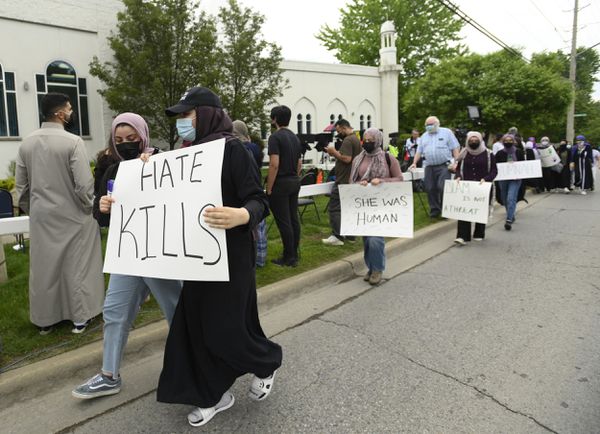Attacks

In 2020, police reported 2,669 hate crimes in Canada, up 37% from 2019 and 67% from 2018. This is the highest number of hate crimes reported by the police since comparable data became available in 2009. the number of reported hate crimes targeting race or ethnicity almost doubled (+80%) from last year, accounting for the vast majority of the national increase in hate crime.
The pandemic has further exposed and exacerbated public safety and discrimination issues in Canada, including hate crime. According to a crowdsourcing initiative at the start of the pandemic, respondents belonging to visible minority groups were three times more likely to experience an increase in racially motivated harassment or attacks compared to the general population (18% versus 6%). This difference was most noticeable among participants from China (30%), Korea (27%) and participants from Southeast Asia (19%). In addition, people classified as visible minorities and indigenous peoples considered their neighborhoods less safe during the pandemic.
Over half (57%) of all hate crimes cases reported by police in 2020 were non-violent, with the remaining 43% being violent. These proportions were similar to recent years. Both non-violent (+41%) and violent (+32%) hate crimes increased compared to 2019, equally contributing to the overall increase in hate crimes in 2020.
The increase in non-violent hate crimes was largely due to an increase in the number of cases of harm (+33%). The increase in violent hate crimes was the result of an increase in the number of cases of several violations, including criminal prosecutions (+70%), serious or aggravated (level 2 and 3) assaults (+58%), ordinary assaults (+23%) and uttering a threat (+11%).
The police reported 1,594 crimes motivated by hatred of race or ethnicity. Most of the growth in these types of hate crimes was the result of crimes against blacks (+318 incidents or +92%), East or Southeast Asians (+202 incidents or +301%), indigenous peoples (+301% ). 44 incidents or +152%) and South Asians (+38 incidents or +47%). In 2020, the police reported the highest number of hate crimes against each of these populations since comparable data became available.
Police-reported hate crimes against Indigenous, Mestizo or Inuit people more than doubled from 29 in 2019 to 73 in 2020. Despite the increase, incidents against indigenous peoples still make up a relatively small proportion (3%) of police reported hate crimes. Self-reported data indicates that the rate of violent victimization among Indigenous people was more than twice that of non-Indigenous peoples, but also showed that Indigenous peoples have less trust in the police, the justice system, and other institutions than their non-Indigenous counterparts. Varying degrees of trust in the police or other institutions among different segments of the population can affect the likelihood that a particular crime will be reported to the police.
After peaking in 2017, the number of hate crimes against religion has been declining for the third year in a row, falling by 16% in 2020. Despite a recent decline, the 515 incidents against religion in 2020 still exceed the number of incidents reported annually through 2017. Among reported hate crimes against religion in 2020, Jewish and Muslim populations continued to be the most frequent victims, accounting for 62% and 16% of crimes against religion, respectively. The Jewish and Muslim population most frequently reported discrimination based on religion.
Although the number of police-reported hate crimes targeting sexual orientation was down by 2% in 2020, the 259 incidents were the second highest reported since comparable data have been available since 2009. About 8 in 10 (81%) of these crimes specifically targeted the gay and lesbian community, while the remainder targeted the bisexual orientation (2%) and other sexual orientations, such as asexual, pansexual or other non-heterosexual orientations (9%). An additional 7% were incidents where the targeted sexual orientation was reported as unknown. As was the case in previous years, violent crimes accounted for almost 6 in 10 (58%) hate crimes targeting a sexual orientation. In comparison, one-fifth (20%) of hate crimes targeting religion and less than half (47%) of those targeting race or ethnicity were violent.


